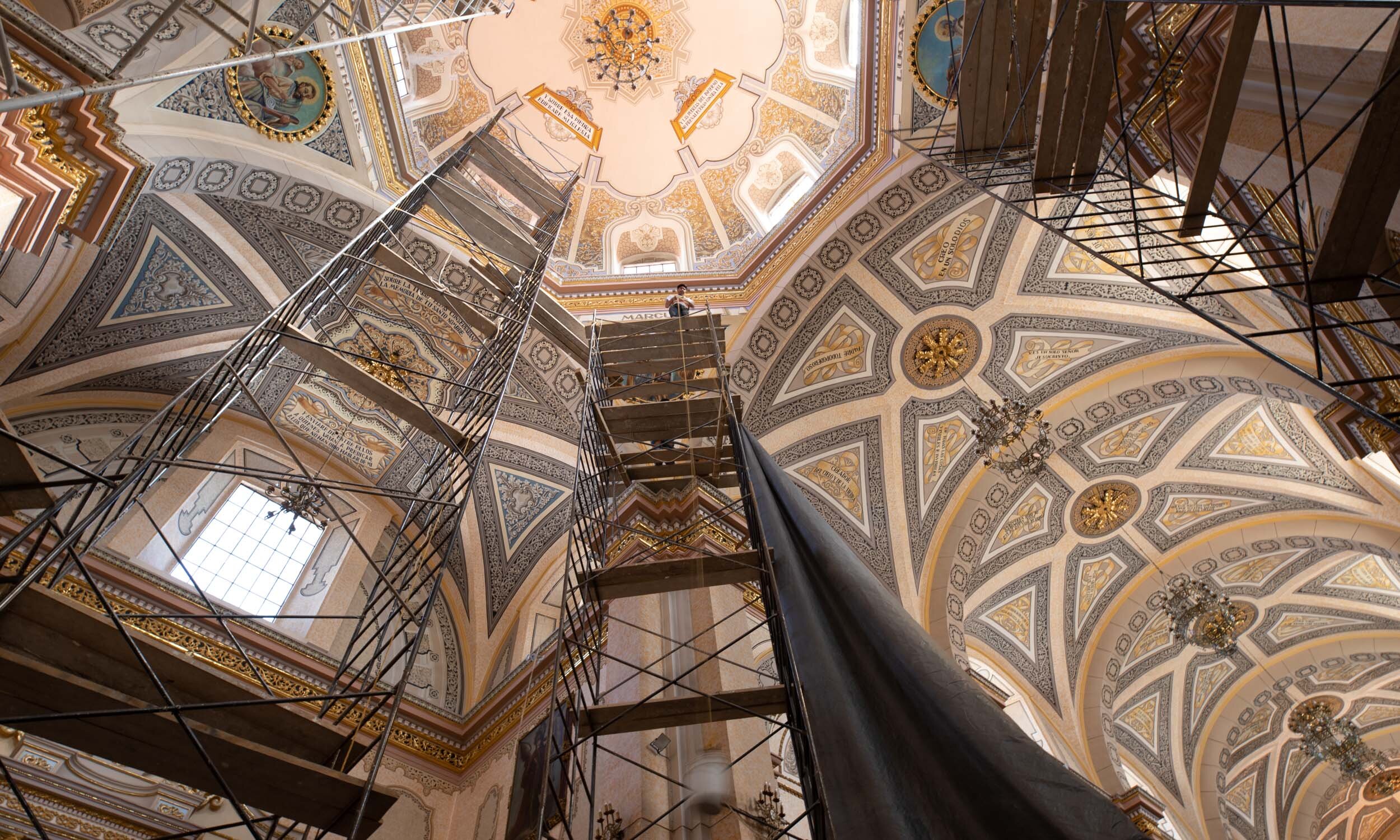Documenting Restoration, Architecture. Parrish San Pedro Cholula.

The Team.
It is crucial to have a team that will make your work easier. That was my perception the first time I arrived with the team. To have a team that is capable of doing the job of restoring the environment, preservation and documenting is essential.
Part of the restoration is not only taking photos but also documenting the process. Storage of the files and how they proceed with the repair is essential for future generations.
The Process.

On the 19th of September 2017, an earthquake shook Mexico’s earth, damaging several buildings; many suffered considerable damage. The church of San Pedro, located on Cholula in the state of Puebla, was one of those many buildings. The team started the repairs in 2019 and ended in December of the same year.
The way they moved so quickly and with steady steps amazed me how they made it look so simple. As they advanced, they cataloged each repair, and the timing also depended on the church’s celebrations and opening.
My work took several months as they moved with each repair.
I wanted to do something different from street photography. I wanted to do some architecture photography, so when I had the opportunity to do it, it was my chance.

In Mexico, there are more catholic churches surrounding each town and city. The historical presence during the conquest of Mexico made it possible, the congregation’s devotion to the temples and the love for their saints.
To make an excellent approach to documenting the process, I search how to do it, including what to take photos and what not. The search wasn’t easy.
Most of the data were in English, and if there were information in Spanish, it wasn’t available online.
I found a lot of information, and they recommended doing it all in black and white.
For each step in restoration, you need to take action by step and take all the information you have at reach. More gear is more valuable because technology integration with repair makes it more useful. Another type of gear besides the camera, a DSLR or Mirrorless, is a drone and a 360º camera.
The team already knows how to do it. Each step takes documenting photos taking photos with their smartphone and setting them on a cloud or big file later. They are restoring moving with pace and recording all in a binnacle.
Restoring the temple is also essential to the architecture and is one of the most beloved temples for the locals. Each day I listened to people that visited the temple when the restoration ended (even though the temple suffered some structural damage, it was not closed at all, It was open, and people visited and were also tourists). The team had to work with the temple available and do the repairs.
The repairs weren’t too big. It seems that were minor repairs, but they have to do it. The disadvantage of opening the temple was a risk but not a big one.
They moved on platforms so they could restore the parts of the church. More easily for them, they are so used to it. The obstacle is that I dont I like heights.
Conquering my fears was a challenge. Safety is a big concern because you move with the structure. It doesn’t feel safer because of all the frame moves, but you feel relief after looking at who they pay attention to for safety. The harness they gave you when you start climbing is essential for securing it, all for documenting.


What type of gear?
I use several cameras Canon, Canon is my camera of choice, but I also use my smartphone; it is possible, but to do it properly, I use some accessories with it.
Cameras:
-
6D MK II,
-
T6i
-
Mavic Pro
-
iPhone 7
Lens:
-
16 – 35mm f2.8
-
24 – 105mm f4.
-
70 – 200mm f2.8
-
50mm f.18
Moment lens:
-
58mm
-
38mm
Tripod.

Will I do it again?
Yes, absolutely. This project was more of a challenge for the height than the process itself; those moments I could not even imagine taking to experience the process of restoring an emblematic place this is is something that will not repeat sooner.
Photography can open more doors even if you are terrified of heights; it will give you new perspectives on what you see and how you preserve the dedication and elaboration of the work in maintaining a place to posterity.
Before/After.
You will see the before and after details, but preserving this work is vital.





























